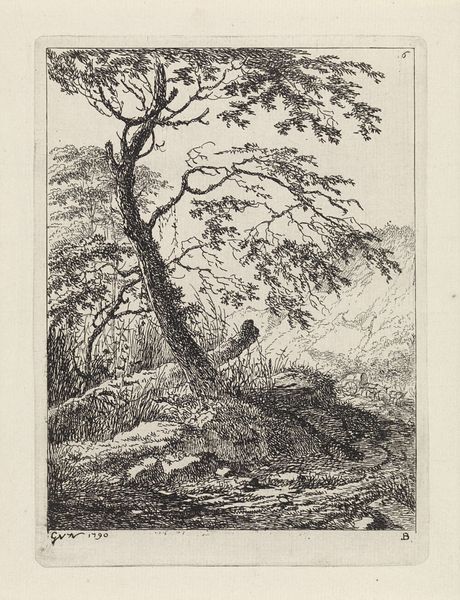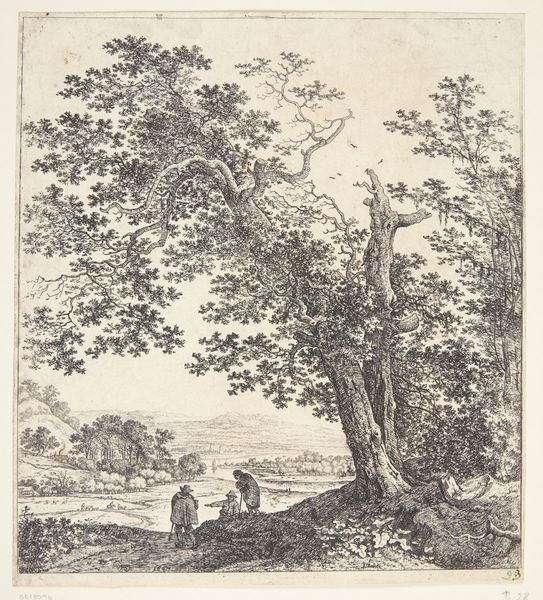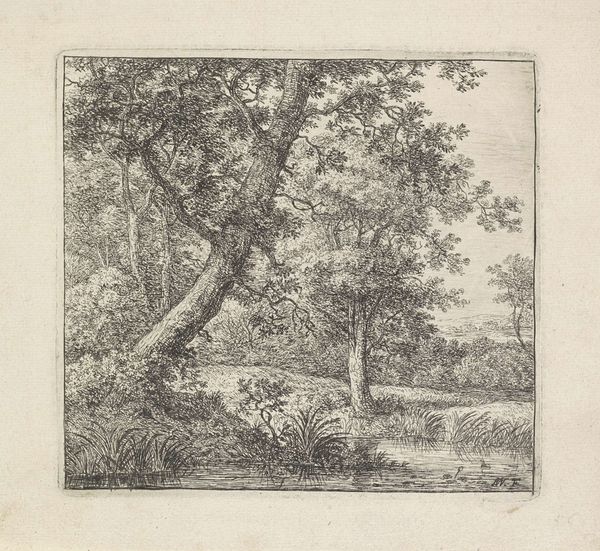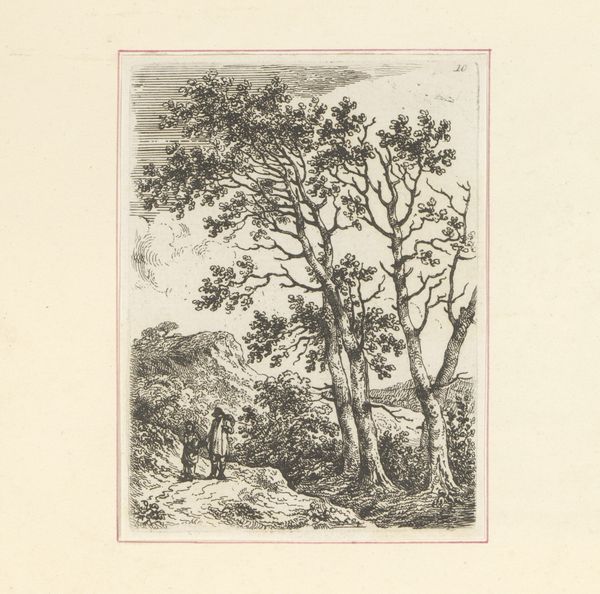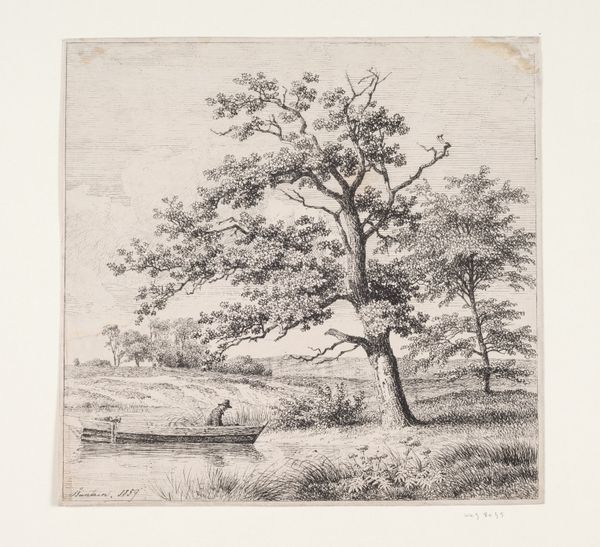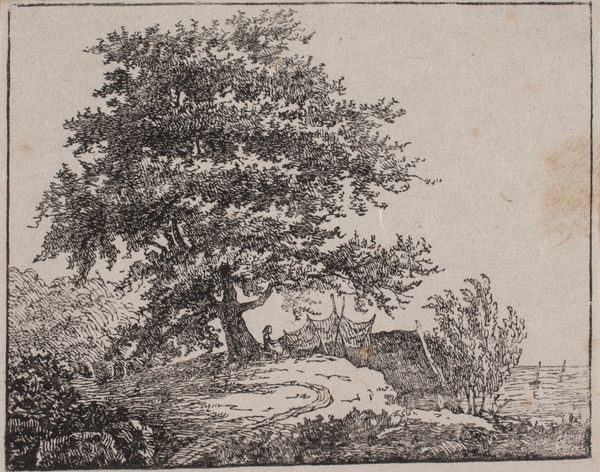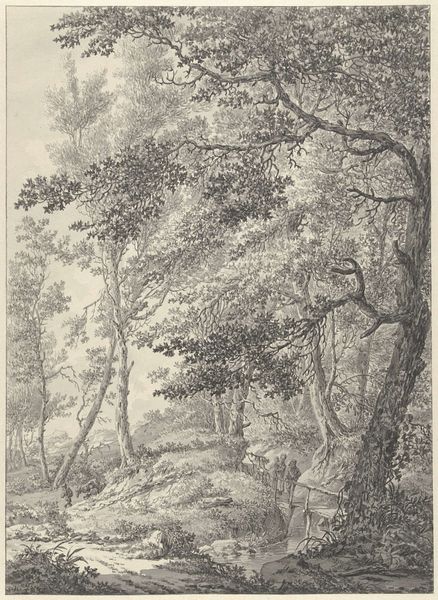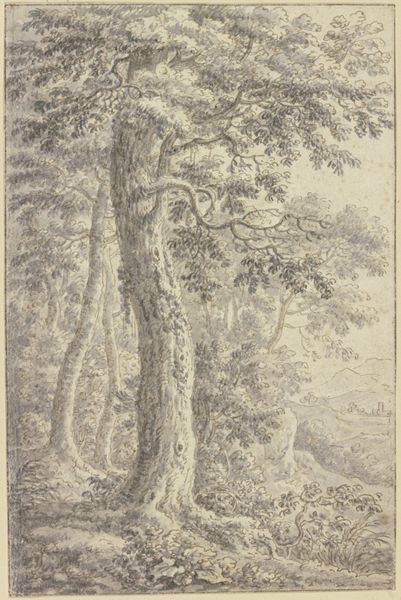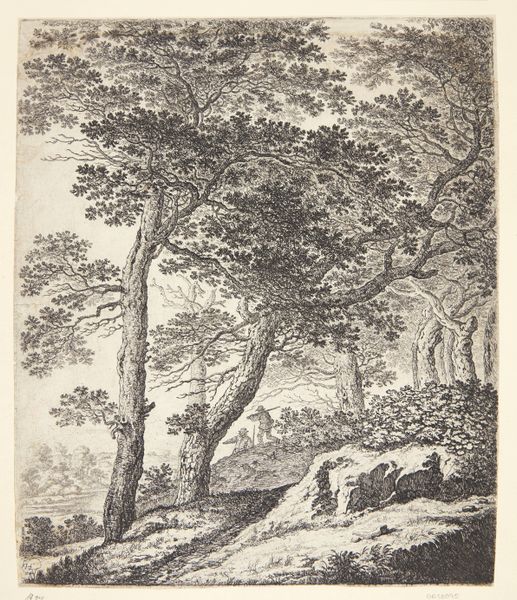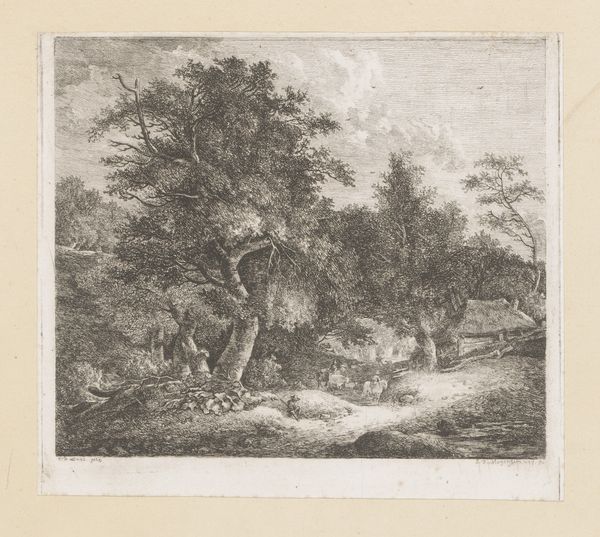
drawing, print, paper, ink, woodcut, pen
#
drawing
#
ink drawing
# print
#
pen sketch
#
pencil sketch
#
landscape
#
paper
#
ink
#
folk-art
#
woodcut
#
line
#
pen
#
realism
Dimensions: 100 mm (height) x 101 mm (width) (bladmaal)
Editor: So, this is "Niels Ebbesens eg ved Nørreris," created by Johan Aagaard between 1818 and 1879. It's an ink drawing, perhaps a study for a print, on paper. I'm struck by the intense detail; it seems to capture a specific place and a very particular, perhaps even romantic, view of nature. What jumps out at you? Curator: Immediately, I think about the materials: ink, paper, wood perhaps if it's a print. Look at how the artist used readily available, relatively inexpensive materials. This choice pushes back against the grand oil paintings of the elite, democratizing art production. Aagaard is documenting a landscape, but what kind of labor went into shaping that landscape? The stone wall, for example, is a product of human intervention. Editor: That's interesting, I hadn't considered that. The wall seemed simply part of the scene. Are you suggesting he's showing how humans interact with nature? Curator: Precisely. He is using this drawing – likely for reproduction and wider circulation – to engage with questions of land use, of transforming natural resources through labor. Also, consider the implications of producing this artwork as a print. Who had access to these images, and how might that affect their perception of nature and nationhood? Editor: So, it's not just a pretty picture. It reflects broader issues of society and the materials they use to shape the world around them? Curator: Exactly. And, how the artist chose these particular materials informs the message as well. Editor: This has really broadened my perspective; I won't look at landscapes the same way again! Curator: It is interesting how a seemingly simple drawing on paper can unlock complex understandings of material and society.
Comments
No comments
Be the first to comment and join the conversation on the ultimate creative platform.
